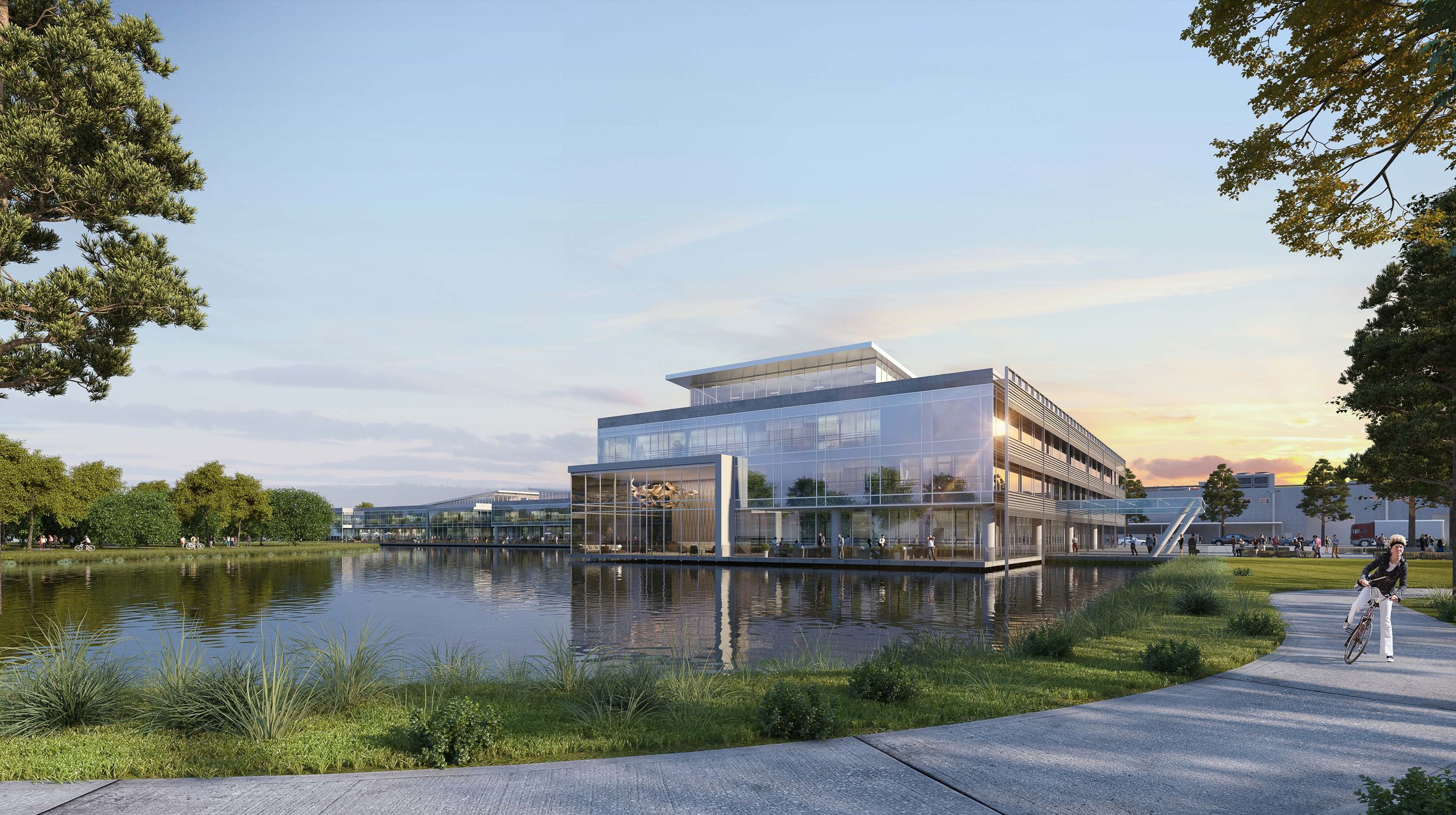Unlocking Doors for Veterans Means Welcoming Skilled Talent
Published Mar 17, 2022 by Susan Moore
Stephanie Drake holds a degree in oceanography from the U.S. Naval Academy and served active duty with the U.S. Marine Corps for eight years. Although a logistician by trade with the Marines, she held seven different jobs over those eight years including running an airport, training female Iraqi police, and conducting historical preservation work on 19th century buildings in Washington, D.C., to name a few.
Drake’s service record is unique to her, but her overall military experience is not.
“I was trained as a logistics officer, but along the way, I became competent in other skills, and that is not special to me,” she shared with an UpSkill Works Forum audience in late 2021.
Following her military service, Drake spent nearly seven years working for Shell and now runs NextOp, a Houston-born nonprofit that helps veterans translate their vast arrays of skills and military experience into civilian careers. Each year, more than 200,000 men and women depart the armed forces and return to civilian lives. Roughly 5,000 of them relocate or return to Houston, which, with more than 250,000 veterans in residence, has the country’s second largest and fastest-growing veteran population. Veterans and transitioning service members bring a wealth of experience to the civilian job market but often face challenges in entering the civilian workforce. Their skills and competencies can appear foreign to civilian hiring managers and talent acquisition teams, and so they go overlooked and miss out on good opportunities. In turn, employers unintentionally pass on good talent.
A Path of Transition
According to data from the Pew Research Center, one in four veterans had a civilian job lined up for after they left the service; these were more than twice as likely to have been commissioned officers than noncommissioned officers or enlisted service members. Pew’s research shows that more than 40 percent of post-9/11 veterans felt overqualified for their first job after leaving the service – almost half (44 percent) of all veterans left their first job within one year, including 20% within the first six months.
About 80% of all military personnel are considered “middle enlisted,” meaning they hold the ranks of E-3 to E-11. Generally, these service members are between the ages of 22 and 28 years old, served between four and eight years, and may have some post-secondary education or even a two-year or four-year degree. They’re who NextOp specifically helps launch meaningful civilian careers. NextOp’s team of employment coordinators work with candidates to convey their accomplishments and skills into terms civilian employers can recognize and value. The team helps “civilianize” resumes, prepare candidates for job interviews, and research companies and opportunities that would suit a candidate. It also helps employers understand how to recognize veterans’ talents, see their growth potential, and prevent them from being inadvertently excluded from a candidate pool.
“They don't have a collegiate network to lean on […]. They don't have years and years of time in the military, so they don’t have an extensive personal network either. Their friends from back home, if they're from here, aren't necessarily well built in their careers either. So, they rely on our network of corporate partners to learn about all the different industries that are here,” Drake said. “We really work to kind of coach each party to understand each other and find these best fits.”
Veterans do have experience working with counterparts and peers, leading teams, and making risk assessments and decisions. They are no strangers to training and are typically fast learners, Drake said. And, like Drake, they have often held several positions in seemingly unrelated areas. Employers might mistake such movement as an undesirable record of “job-hopping,” but, Drake said, it can actually reveal a veteran’s attractive attributes such as adaptability, aptitude for learning, as well as an ability to follow the direction of leadership to work where someone is needed – all boons in a dynamic business or work environment.
This capacity for learning is part of what makes job candidates with a military background attractive to Carla Thompson, workforce development manager for the industrial construction, maintenance, and servicing company Turner Industries Group, LLC.
“To me veterans hold so much value for any organization. The training they have gone through in the military is incredible – it is saving me weeks and months of training,” Thompson said during the forum. “When I hire a military candidate, I’m getting somebody who is used to scheduling. I'm getting somebody who is used to being on time. I’m getting somebody who 100 percent is going to get the job done because that's what they've been trained to do. They ask questions. They are not afraid to lead when need be.”
Thompson – and Turner, in general – recognizes how veterans with certain training or knowledge can fit into a range of roles across the organization. Individuals from logistics backgrounds can transfer their skills to warehousing and warehousing management, Thompson said, and those with any kind of mechanical training can transfer into millwright and pipefitting fields with some additional learning.
Unlocking the Doors to Veterans
Attracting talented veterans begins with having an open mind about a candidate’s background and potential.
Thompson works closely with the Turner’s hiring managers to understand the company’s needs and recommends promising candidates. These managers are open and willing to listen, she said. The company is able to bring in new talent it knows will fit immediate and future needs.
Drake said some employers are surprised to learn that veterans are not interested in continuing in a line of work they held while serving. Employers can turn to veterans among their existing workforce to gain insight for attracting, growing, and keeping good veteran talent, she said.
For example, another major, veteran-friendly employer, Silver Eagle Distributors Houston, LLC, has created veteran community resources groups to help its veterans network and build camaraderie out of their shared service experiences, according to company talent acquisition manager Katrina Salazar. Veterans also provide input on future programs and initiatives, she said.
Employers new to recruiting veterans can set small hiring goals, Drake said, and receive support. In 2018, the U.S. Department of Defense launched the SkillBridge program, which allows service members to use up to their last 180 days of service to train and learn through an apprenticeship, internship, or similar program with an industry partner, while continuing to receive military pay and benefits. In other words, employers can bring this talent into their organizations (and try it out) at no cost. NextOp facilitates the program in the Houston area. Employers can partner with organizations such as the veteran-focused Adaptive Construction Solutions to train and hire veterans through apprenticeships and the Greater Houston Apprentice Network (GHAN) to build their own apprenticeship programs.
Attracting veterans also takes clarity on the part of employers. Employers can help veterans and transitioning service members, and organizations like NextOp, by articulating the skill sets, certifications, and other workforce needs. Employers can “unlock the doors” for veterans and transitioning service members, Drake said.
“A lot of what service members are looking for is clarity,” she said – not necessarily binary absolutes but a path for growth. “They like to see expanded opportunity, expanded responsibility, and what that offers them.”
The Partnership’s UpSkill Houston initiative works to strengthen the talent pipeline employers need to grow their businesses and to help all Houstonians build relevant skills and connect to good careers that increase their economic opportunity and mobility. NextOp Veterans, Silver Eagle Distributors Houston, LLC, and Turner Industries Group, LLC are among the initiative's over 200 regional partners. Learn more.
The UpSkill Works Forum series presents conversations with regional business, education, and community leaders; policy makers; and high-profile thought leaders on the key workforce issues the greater Houston region confronts. See all past forums here.
 The Houston Report
The Houston Report




















